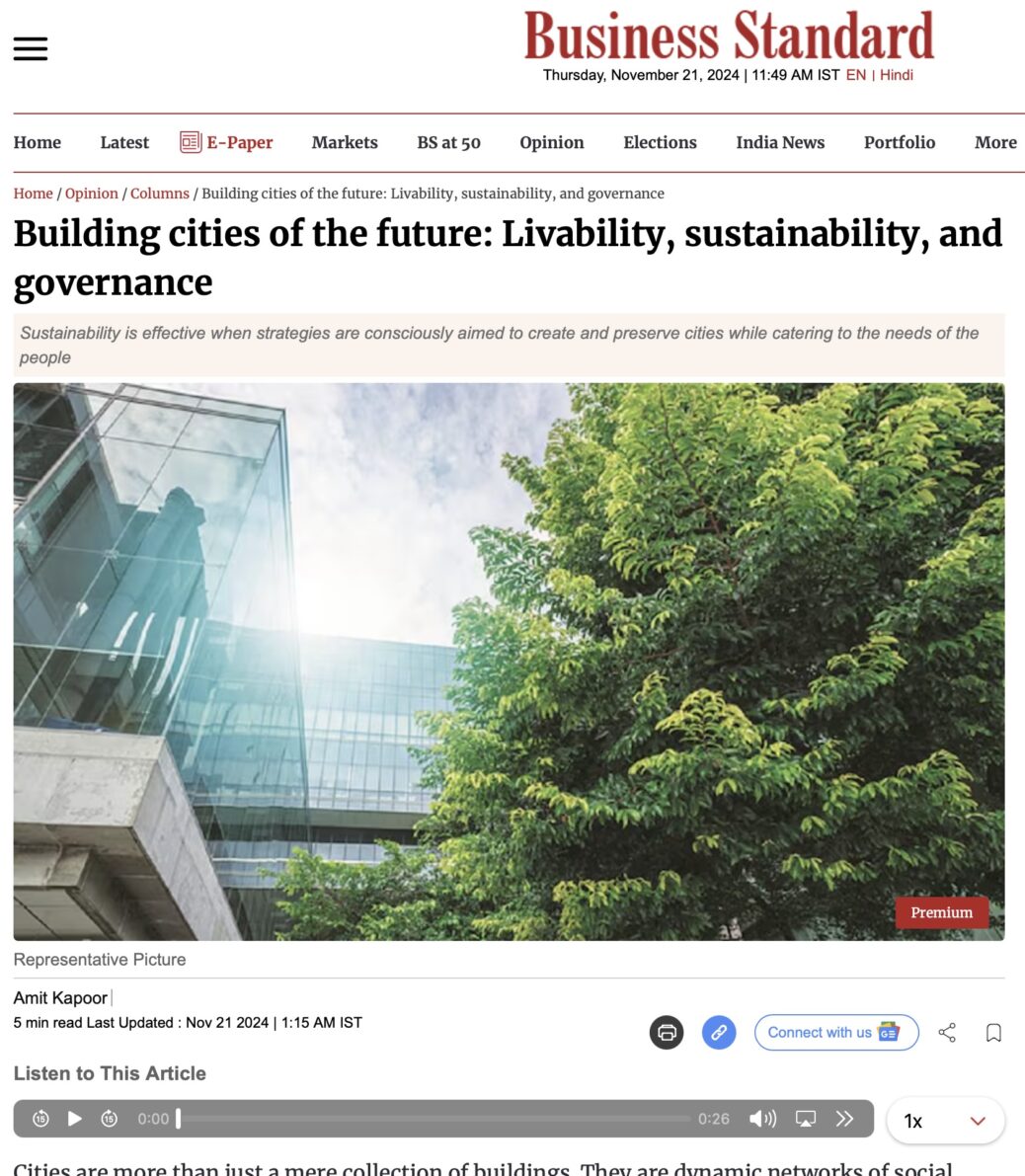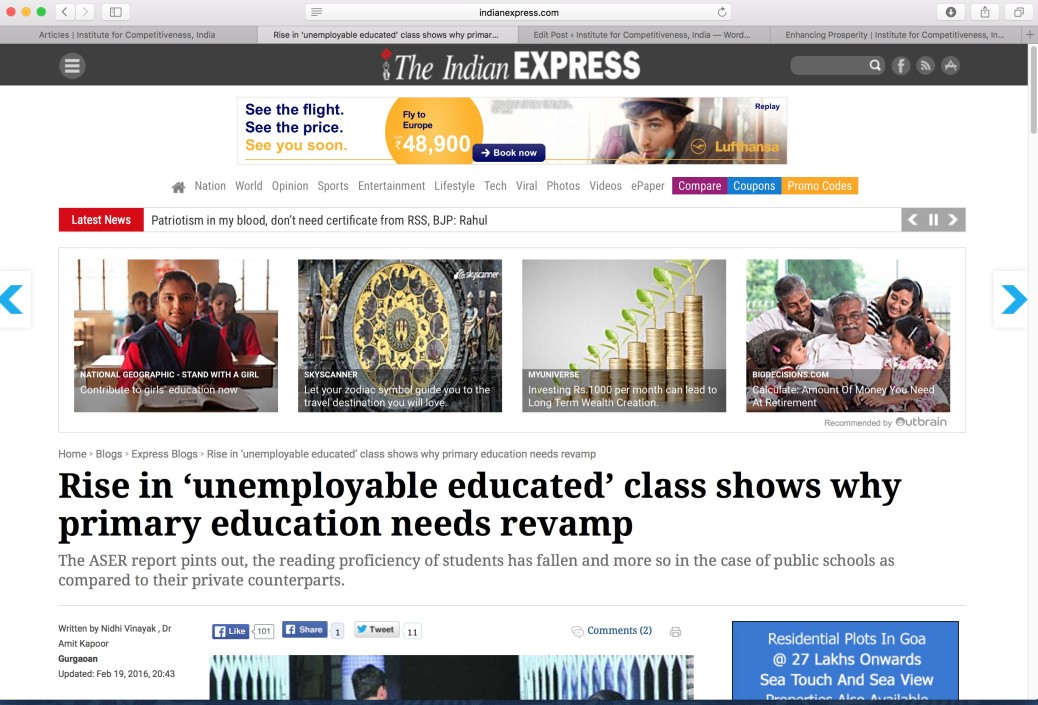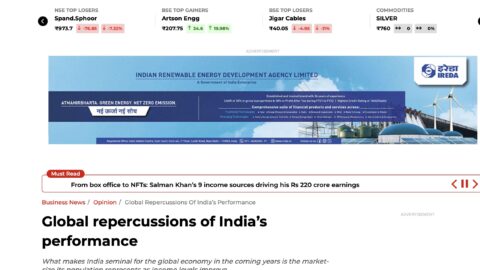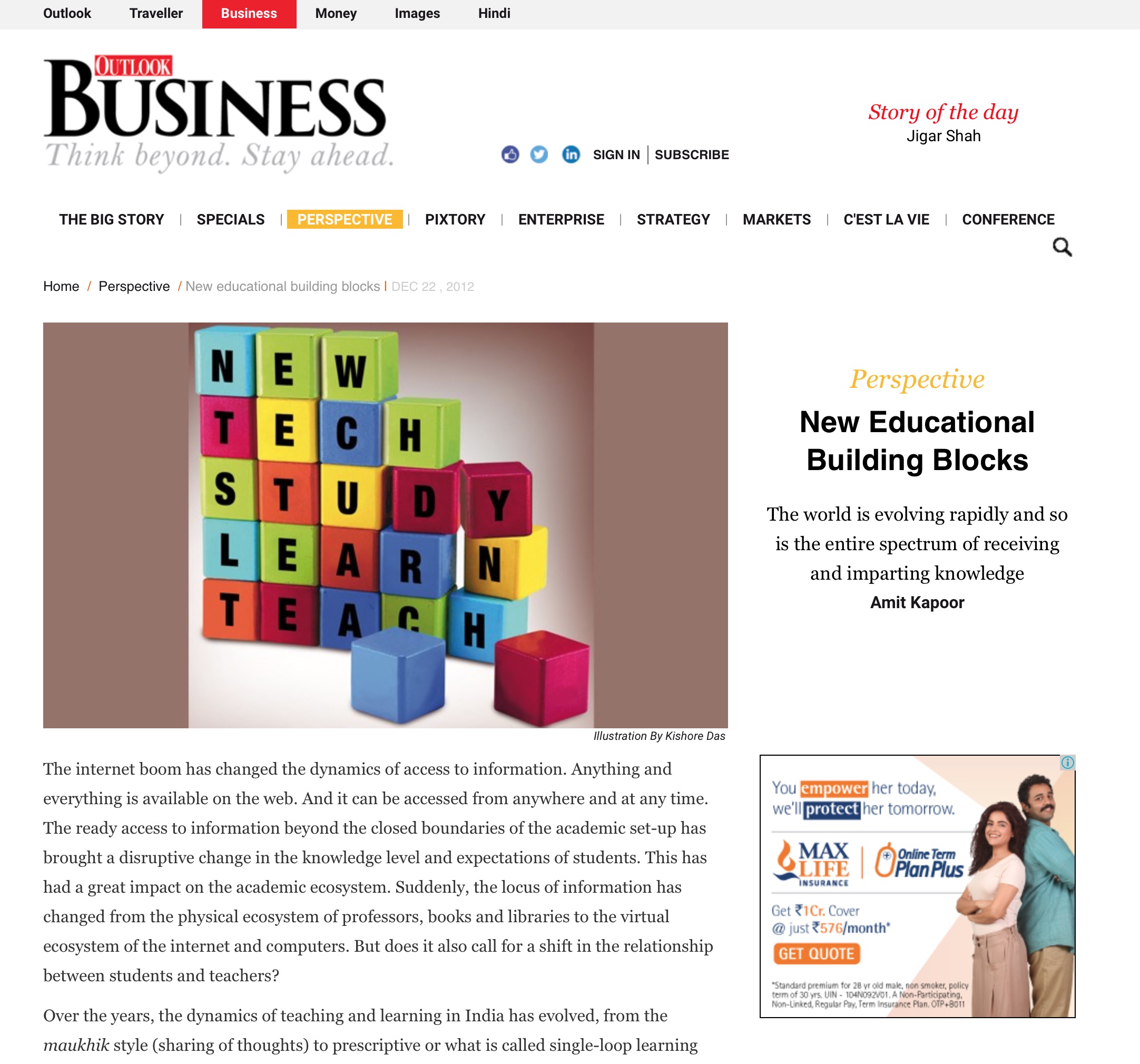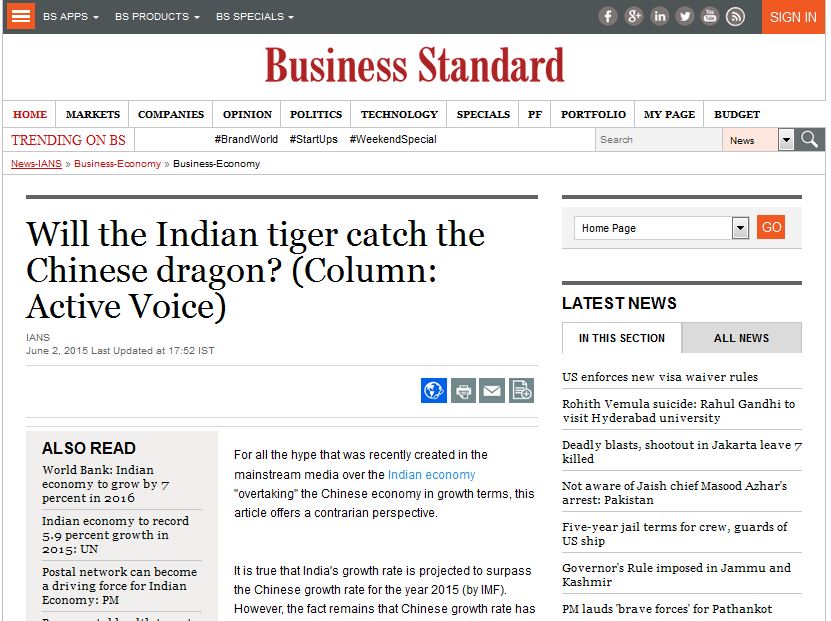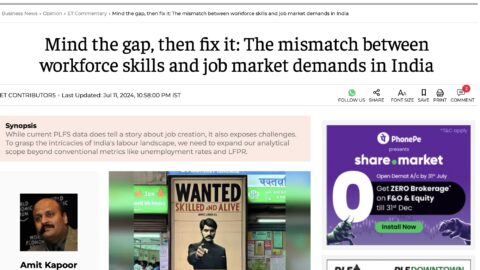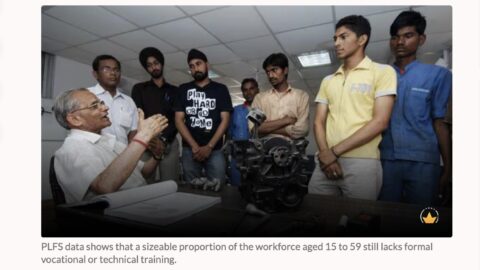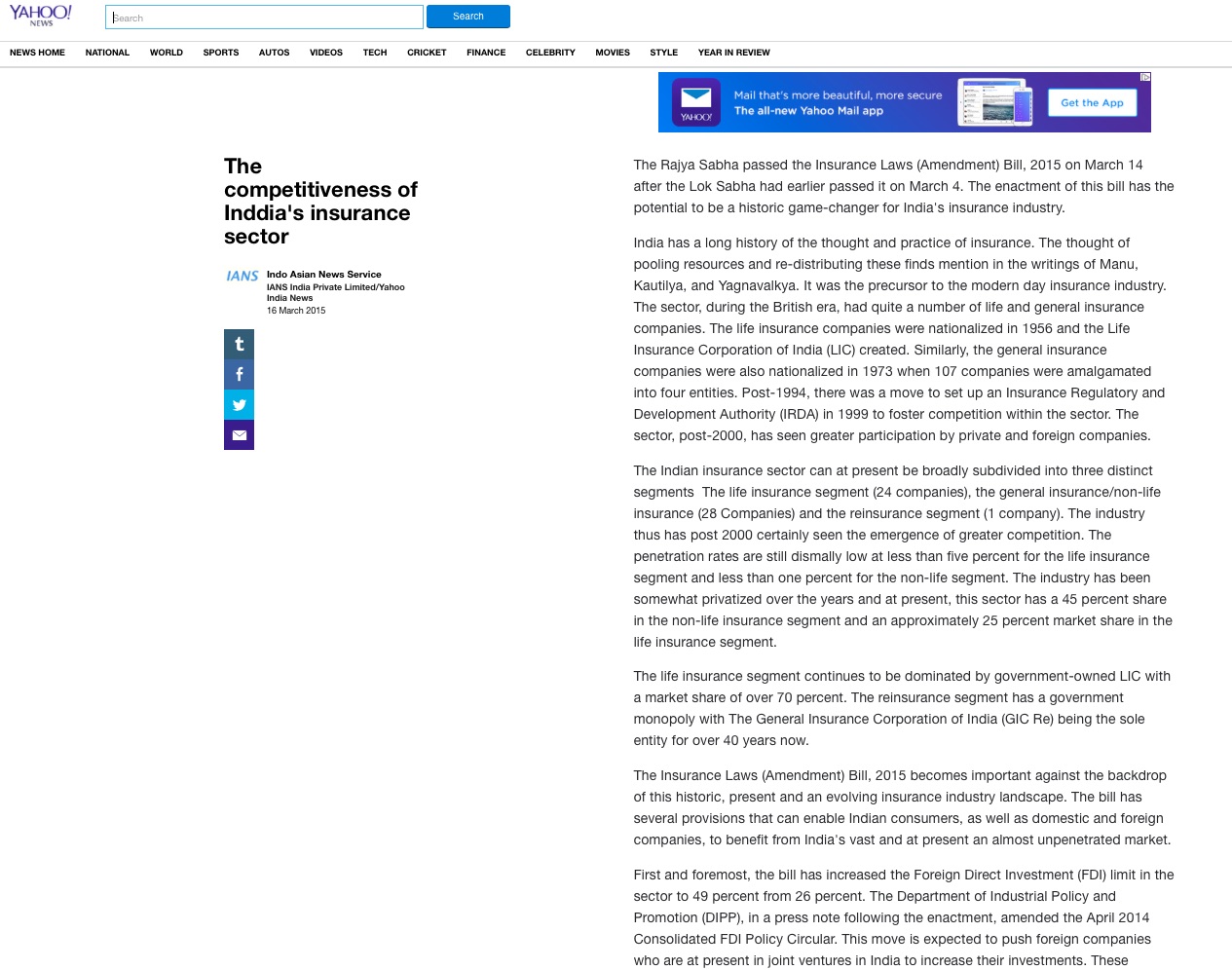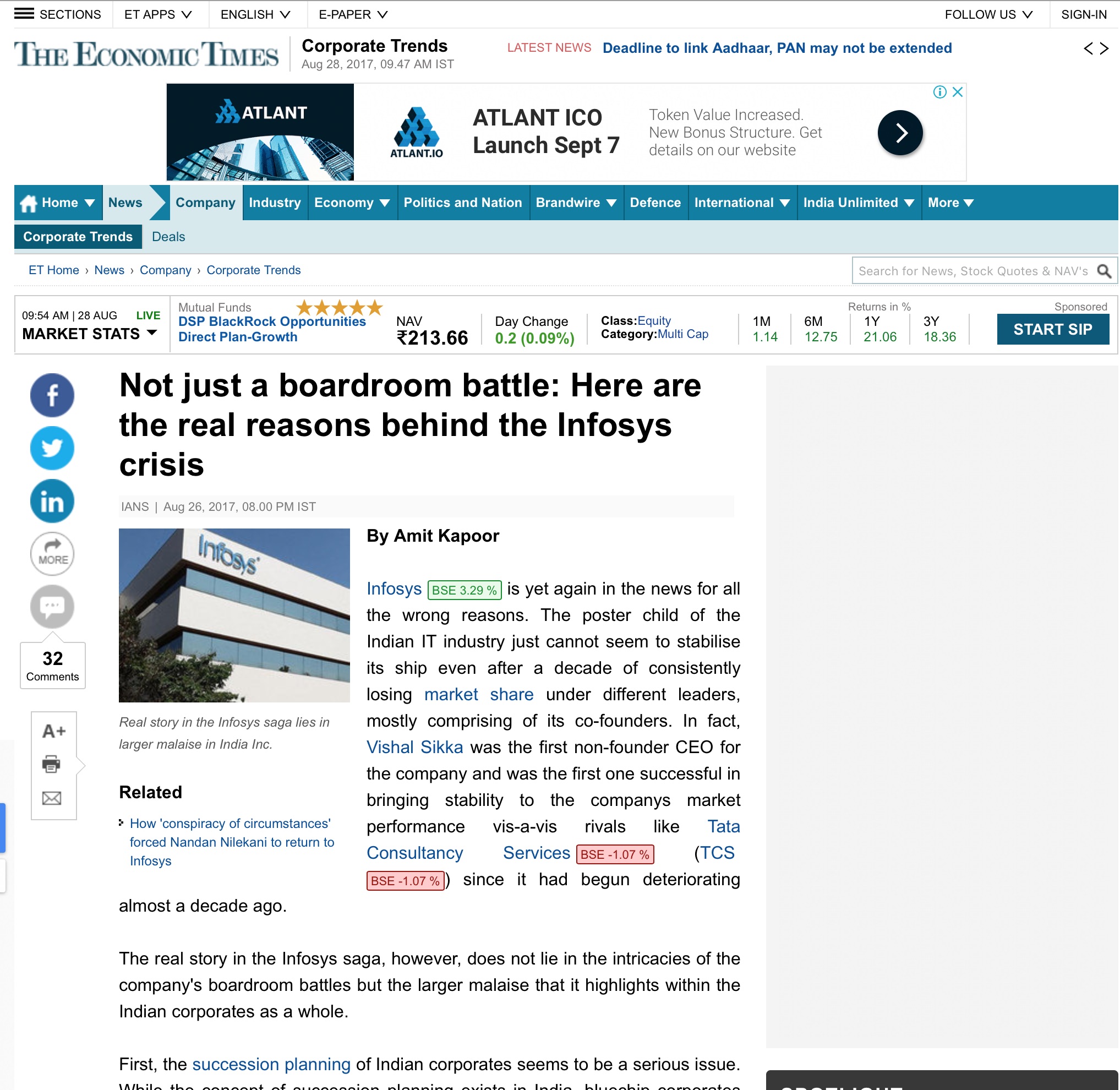By Amit Kapoor
Cities are more than just mere collection of buildings; they are dynamic networks-of-networks of social systems, services, buildings and infrastructures. Cities are spaces with different forms and functions which offer diverse opportunities to people. Simultaneously, this translates to increased urbanisation, bringing forth a myriad of challenges in the cities that requires attention. Building and designing cities become meaningful only when it enhances the quality of life for people, further enabling their interactions, usage and movement in a manner that it is liveable, sustainable and well-governed. Such was Economist, Dr Bibek Debroy’s vision for cities; his work has been influential in voicing India’s pursuit of urban transformation. His ambitions were not only centred around addressing the current challenges of cities but also on laying the foundation for future growth.
His idea of ‘sustainability’ has been non-negotiable, and it should be core to the process of urban planning. Cities are often considered hubs for economic growth; however, this approach eventually results in the commodification of land and natural resources which further impacts the environment. In response to the cost of this excess growth, there is an emerging expectation of cities to be developed in a ‘sustainable’ manner that will make cities prosper in the long run. Sustainability is effective when strategies are consciously aimed to create and preserve cities while the people’s needs are catered. Planned urban development is a key determinant to achieving sustainability, ensuring both transactional and transformational activities. The former involves day-to-day tasks that are necessary for the smooth functioning of cities, while the latter comprises of assertive actions that would shape the city’s future in a sustainable manner and promote resilience. This combination can help cities meet the evolving needs of the people and safeguard the resources for the future.
In the recent times, cities are also experiencing major transformation in technology and Internet of Things (IoT), driven by ‘data science’ which enables cities to utilise data for improving operations and making decisions. Dr Debroy actively advocated on leveraging technologies such as artificial intelligence (AI), IoT and data to create cities that collects and runs on data-driven systems. The model of ‘Smart Cities’ is based on this principle which harnesses data-oriented smart solutions to provide ease of living to its people. In these models, data is continuously collected from a wide array of sources such as IoT devices, sensors and other numerous public databases. This influx of information has tremendous potential for providing insights and hidden correlations that can certainly help in the city functions. To exercise the full capability of this data, AI in particular machine learning (ML) models can be employed to create analytical frameworks for interpreting the intricate dynamics of cities. For instance, ML algorithms can estimate traffic patterns, waste management or water demand that will allow the resources to be allocated adequately and manage the services efficiently.
For better service delivery that includes housing, water, sanitation, infrastructure and other amenities, urban governance is the binding force that ensures collective actions at the local level. Decentralisation is an important step to empower local governments by transferring functions, finances, resources, structures and systems. For example, decentralised governance has been fundamental to policy making in various developing countries like Ethiopia, Cambodia, Uganda, South Africa, etc. Policies, in this context, serve as the ‘software’ without which the cities will fail to function. Much like software in a technological system, policies establish guidelines and frameworks that enable the urban system to function seamlessly. Dr Debroy’s understanding on the challenges of urban governance lies in the fact that municipal finance lacks adequacy. Even after the devolution of powers to the local government, they are unable to create resources to improve service delivery and improve quality of life for the people. The primary source of resource within the revenue portfolio of most ULBs is the property tax, which accounts for about 60 percent of the municipal tax revenue in the country. However, this is not sufficient to fund all the services required in the urban areas. As a result, local bodies mostly rely on subsidies from the Central and State government to cover their spending. This dependency on external resources creates complicated challenges in the planning and implementation of urban development projects.
As cities expand, the pressure on their carrying capacity intensifies manifold. As an outcome of this phenomenon, the urban growth spreads to the areas at the periphery of cities know as peri-urban areas (PUAs). Dr Debroy considered these areas to have the potential in offering enormous opportunities; however, if left unregulated it can contribute to stark developmental disparities. Likewise, the burgeoning urban areas, these peri-urban areas also have environmental, social and ecological issues as it bears the impact of the urban expansion. They become sites where the city’s waste is disposed, and they house population who have been displaced from the urban areas or the ones who cannot afford houses in the city. These regions serve as ‘buffers’ absorbing the city residues, with a complex blend of rural and urban dynamics facing stress from both. In this context, it becomes critical to formulate a robust governance framework that can constantly adapt to the changing and evolving environment, while promote sustainable urban development in these regions.
To strengthen and build the overall capacity of cities in the truest sense requires a careful balance of governance, liveability and sustainability, which together form pillars for resilient urban growth and ease of living. When these elements are embedded in the implementation of urban development, they address the immediate needs as well as lays the principles for cities to thrive economically, socially, and environmentally in the long run. Dr Bibek Debroy’s perception on cities encouraged reimagining and rethinking of the city ecosystems, in a way that cities are not only functional but also aspirational.
The article was published with Business Standard on November 21, 2024.

